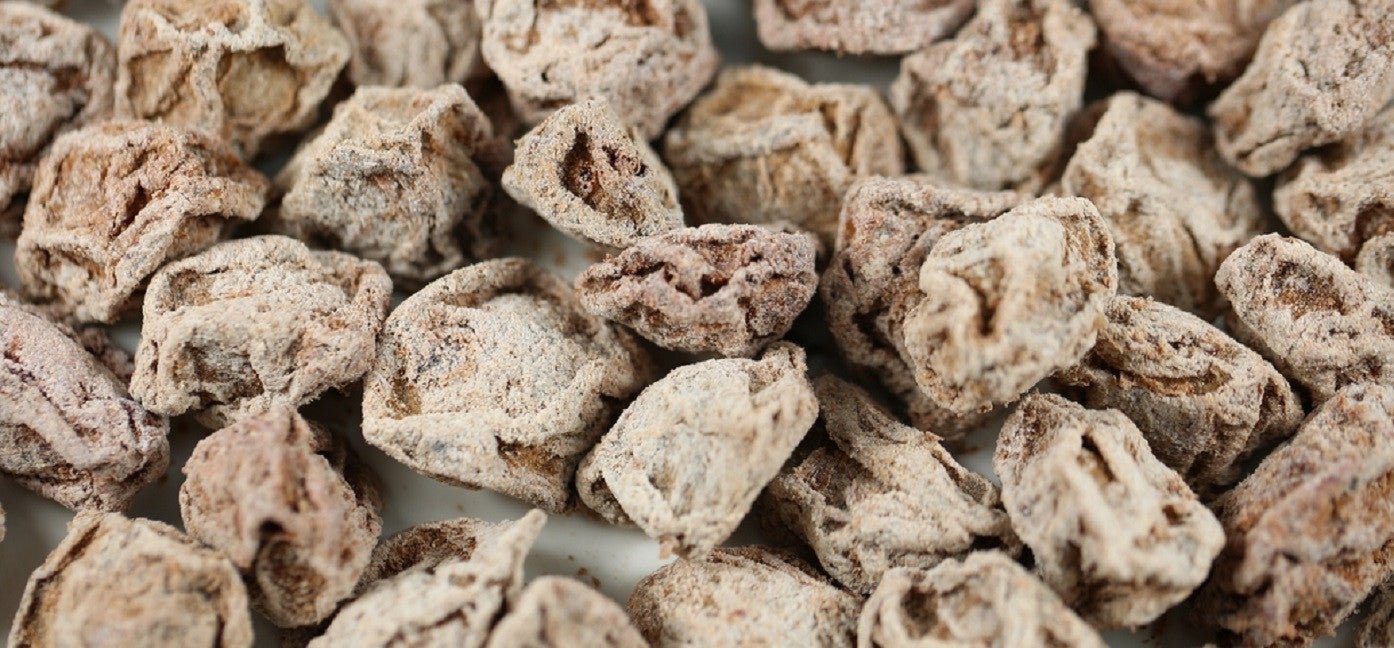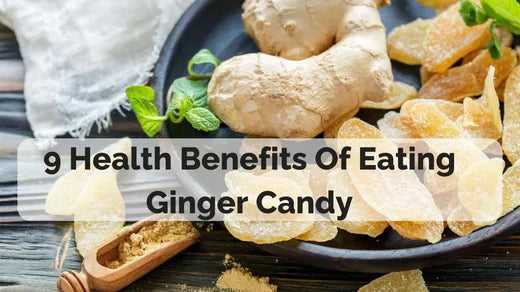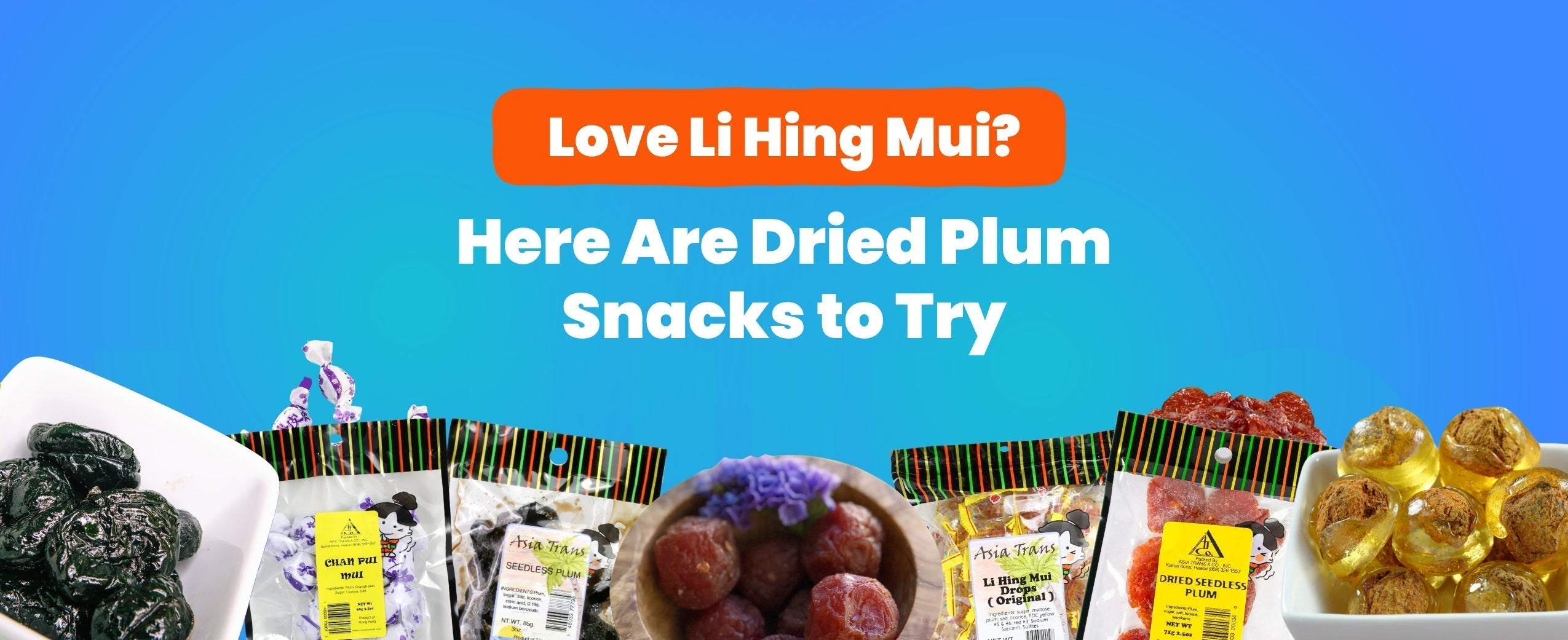
Li Hing Mui: Hawaii’s Favorite Traveling Plum Explained
If you’ve ever visited Hawaii, you've seen it everywhere—a vibrant red powder or a unique salty-sweet flavor added to everything from candy and gummy bears to fresh fruit and even cocktails. That distinctive taste belongs to Li Hing Mui, often called the "traveling plum." This flavor is far more than just a local novelty; it’s an iconic piece of Hawaiian culture with a fascinating history rooted in global trade and migration.
But what exactly is Li Hing Mui, where does it come from, and why is it so incredibly popular in the islands? This guide will dive deep into the origins of this Chinese preserved plum, explain its journey to become Hawaii’s favorite snack seasoning, and explore the unique sweet, sour, and salty flavor profile that defines so much of the local cuisine. Get ready to discover the story behind the plum that traveled the world!
What is Li Hing Mui?
A preserved dried plum with a salty, sweet, and tangy flavor, Li Hing Mui is a staple treat in Hawaiian and Chinese cultures. Originating from China, its name means “traveling plum,” and it became popular in Hawaii through Chinese plantation workers.
Li Hing Mui Pronunciation and Meaning
The phrase "Li Hing Mui" comes from the Cantonese phonetic translation of 旅行梅, which means “traveling plum.”
-
Pronunciation: lee hing moo-ee
-
Li Hing = traveling
-
Mui = plum
In Mandarin, preserved plums are often called hua mei or “talking plum.” In Zhongshanhua dialect (spoken in southern Guangdong), the unique pronunciation “Li Hing Mui” developed—and stuck.
A Brief History of Li Hing Mui
-
Origin: Ancient China, used as a preserved food during long journeys.
-
Brought to Hawaii by Chinese immigrants in the 1800s.
-
Became popular in local Hawaiian stores as part of the crack seed culture.
-
Today: A nostalgic treat enjoyed by locals and tourists alike.
What Does Li Hing Mui Taste Like?
Li Hing Mui has a complex flavor: salty, sweet, sour, and sometimes tangy or spicy depending on how it's made.
There are many variations:
-
Red or white powder coating
-
With or without seed
-
Sweet, spicy, or tart
How is Li Hing Mui Made?
-
Made from dried plums or apricots.
-
Preserved in salt, sugar, and sometimes licorice, aspartame, or artificial coloring.
-
Often finished with Li Hing Powder, which is made from plum skin, salt, and food coloring.
Popular Ways to Enjoy Li Hing Mui
Li Hing Mui isn't just a standalone snack—it’s a flavor enhancer across Hawaii:
-
Li Hing Powder on fruits (pineapple, mango, green apples) 🍍
-
Li Hing Margaritas or cocktails
-
Li Hing Gummy Bears & candies
-
Li Hing popcorn
-
In shave ice, mochi, or sherbet
Try it at home! Shop our Li Hing Mui snacks and discover a new favorite flavor.
Is Li Hing Mui Healthy?
Li Hing Mui is high in sodium and sugar but consumed in moderation, it’s more of a nostalgic cultural treat than a health snack. The original purpose was for long-term food preservation and replenishing electrolytes.
Where to Buy Li Hing Mui?
You can find it in:
-
Local Hawaiian crack seed shops
-
Asian grocery stores
-
Online, like Snack Hawaii
FAQs on Li Hing MUI
How do you pronounce Li Hing Mui?
Li Hing Mui is pronounced lee hing moo-ee.
What is Li Hing Mui made of?
It’s made from dried preserved plums, often with salt, sugar, licorice, and plum powder added.
Is Li Hing Mui Chinese or Hawaiian?
Originally Chinese, it became deeply rooted in Hawaiian food culture after Chinese immigrants brought it to the islands.
What does Li Hing Mui taste like?
It has a salty, sweet, and sour taste—often compared to tamarind or sour candy with a hint of salt.
What is crack seed?
Crack seed is a term used in Hawaii to refer to preserved fruits and seeds, often cracked open or split for easier snacking. Li Hing Mui is one of the most popular types.
What fruits taste best with Li Hing Powder?
Fresh pineapple, mango, apple slices, and guava pair wonderfully with Li Hing Powder.
Can kids eat Li Hing Mui?
Yes! But some versions have high salt or artificial sweeteners, so moderation is key.





Leave a comment